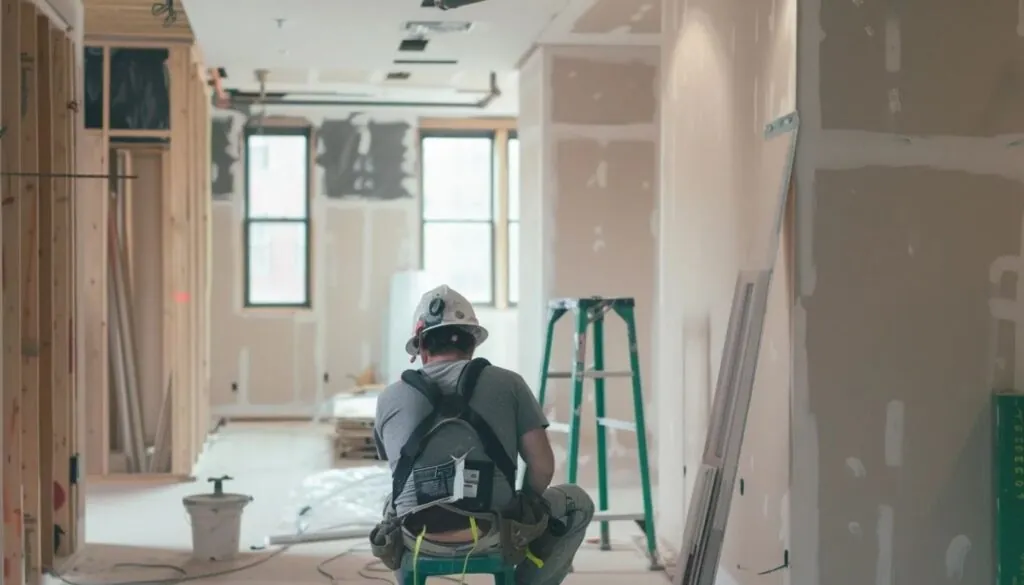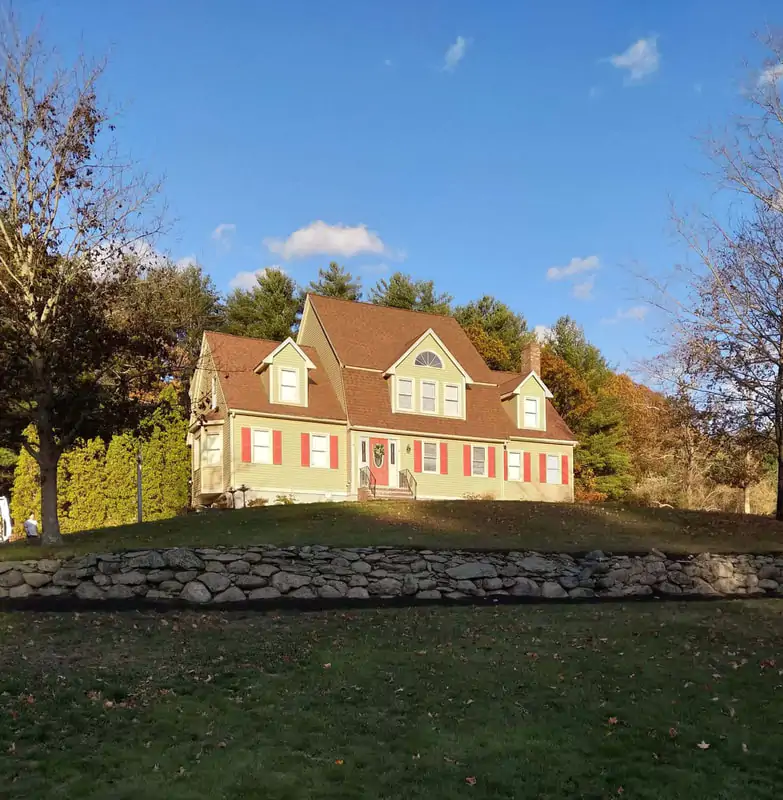When painting your home’s interior, the right temperature makes all the difference in getting a smooth, lasting finish. Knowing the ideal conditions for painting indoors helps the paint go on properly and dry evenly. From the best temperature to paint inside to how humidity impacts your results, this guide will help you achieve a beautiful, long-lasting finish every time.
Understanding Temperature Requirements for Indoor Painting
The right temperature is key to achieving a flawless interior paint job. For most paints, the ideal indoor temperature ranges from 50°F to 85°F. Within this range, paint dries evenly and adheres well to surfaces. If it is too cold, paint can take too long to dry, risking smudging or uneven finishes. On the other hand, excessive heat can cause the paint to dry too fast, making it harder to achieve a smooth, streak-free result.
Best Temperature Ranges for Different Paint Types
For most indoor house painting projects, the ideal temperature for painting inside is between 50°F and 85°F. This range allows the paint to dry and cure properly, ensuring it adheres well to surfaces. Homeowners may ask, “When is it too cold to paint inside?” If temperatures drop below 50°F, the paint may not cure correctly, leading to poor adhesion and a rough finish. Oil-based paints typically require slightly higher temperatures, while latex paints are more flexible. Always check the manufacturer’s recommendations, as specific paints may have their temperature guidelines for the best results. Visit our painting services for more information.
Effects of High and Low Temperatures on Paint Quality
Extreme temperatures can significantly impact the final appearance and durability of your paint job. When it is too cold, the paint may not cure properly, leading to streaking and longer drying times. On the flip side, painting in hot temperatures can cause the paint to dry too quickly, making it difficult to smooth out brush strokes. Maintaining a balanced temperature is key to getting that flawless finish.
Common Temperature-Related Paint Problems
Several issues may arise when the temperature is not ideal for painting indoors. If it’s too cold, you may notice peeling or cracking as the paint doesn’t have time to bond with the surface. The paint might form bubbles or blisters in warmer conditions, ruining the smooth finish. Always ensure your space meets the recommended temperature range for the best possible outcome.
How Humidity Impacts Indoor Painting Projects
Humidity can significantly impact your indoor painting project. You may be wondering, “Does humidity affect painting indoors?” The answer is yes—high humidity can slow down the drying process, while low humidity can cause the paint to dry too quickly. Both situations can lead to issues like streaks, poor adhesion, or an uneven finish. Managing humidity indoors is essential to achieving a smoother, more durable paint job that lasts over time and ensures a professional-looking result.

Optimal Humidity Levels for Indoor Painting
Humidity plays a crucial role in how well paint adheres and dries. The best humidity for painting indoors is between 40% and 60%. At these levels, the paint has enough moisture to apply smoothly and dries at the right pace. Too much humidity can slow down the drying process and cause the paint to take longer to cure, while low humidity can lead to premature drying and poor adhesion.
Risks of High Humidity During Paint Application
When the humidity level is too high, it can lead to a variety of issues in interior house painting. High humidity can cause paint to dry too slowly, leaving it vulnerable to dust and debris. If the paint does not dry properly, it may also promote the growth of mold or mildew. For best results, monitor humidity and avoid painting on overly humid days to protect the integrity of your project.
Tips for Managing Humidity Indoors When Painting
Humidity can significantly impact the quality of your paint job, affecting how the paint adheres and dries. Controlling humidity ensures a smoother, more durable application, preventing common problems associated with interior house painting. Here are a few simple tips to help you maintain the right conditions for a successful paint job:
Use a Dehumidifier
If it’s a humid day, a dehumidifier can help lower moisture levels in the air. This ensures that the paint dries at an ideal pace, preventing issues like streaking or bubbling that can occur when paint absorbs excess moisture from the environment.
Improve Ventilation
Open windows and doors to allow fresh air to circulate throughout the room. Proper ventilation speeds up the drying process by reducing humidity buildup, which can otherwise cause the paint to dry unevenly or result in a blotchy finish.
Use a Humidifier
In dry conditions, a humidifier can add moisture to the air, slowing the drying time of the paint and preventing it from drying too quickly. This helps ensure the paint stays smooth and adheres properly to the surface, avoiding cracking or poor bonding.
Monitor Temperature and Humidity
Regularly check the room’s temperature and humidity levels to ensure they remain within a favorable range for painting. This helps maintain optimal conditions, providing a smooth application, even drying, and a professional-looking, long-lasting finish.
By managing indoor humidity effectively, you will achieve better results with paint that cures appropriately and looks great.
Why Exterior Weather Still Affects Indoor Painting

Even when painting indoors, exterior weather can still affect your results. Outdoor temperature and humidity can seep into your home, influencing the indoor conditions. For example, if it is too hot or cold outside, it can impact the indoor temperature, slowing or speeding up the drying process. You might also wonder, “Why can’t you paint when it rains?” Rainy weather can increase humidity levels inside, making it harder for the paint to cure properly. Always consider the outdoor weather when planning your interior house painting project for the best results.
How Outdoor Temperature Impacts Indoor Painting Conditions
Even when painting indoors, the outdoor temperature can still affect your project. If it’s too hot or cold outside, it can impact the indoor climate, especially if windows are open or ventilation isn’t ideal. This can mess with the temperature for painting, leading to uneven drying or improper curing. It is important to monitor both indoor and outdoor conditions to create the best environment for painting.
Painting on Rainy Days – Should You Avoid It?
You might wonder why you cannot paint inside when it rains. Rainy weather can increase moisture in the air, negatively affecting how the paint adheres to surfaces and dries. While rain does not directly affect indoor painting, the increased moisture can slow the drying process or cause other issues. If you need to paint on a rainy day, ensure good ventilation to help the paint cure properly.
Ensuring Proper Ventilation During Interior Painting
Ventilation is key when painting indoors, regardless of the weather. Proper airflow helps regulate temperature and humidity levels, preventing moisture build-up and allowing the paint to dry correctly. Open windows use fans or an air circulator to keep the air moving. Good ventilation ensures your paint dries evenly and helps maintain the integrity of your finish.
Achieve Best Results, Call a Professional
While you can take steps to ensure the right temperature and humidity for interior house painting, sometimes it is best to call in a professional. Experienced painters understand the nuances of house painting temperature, humidity, and the ideal conditions for each type of paint. With their expertise, you can avoid common issues and achieve a high-quality, long-lasting finish that enhances your home’s beauty for years. Contact Quality Preferred Painting today for a free consultation!








